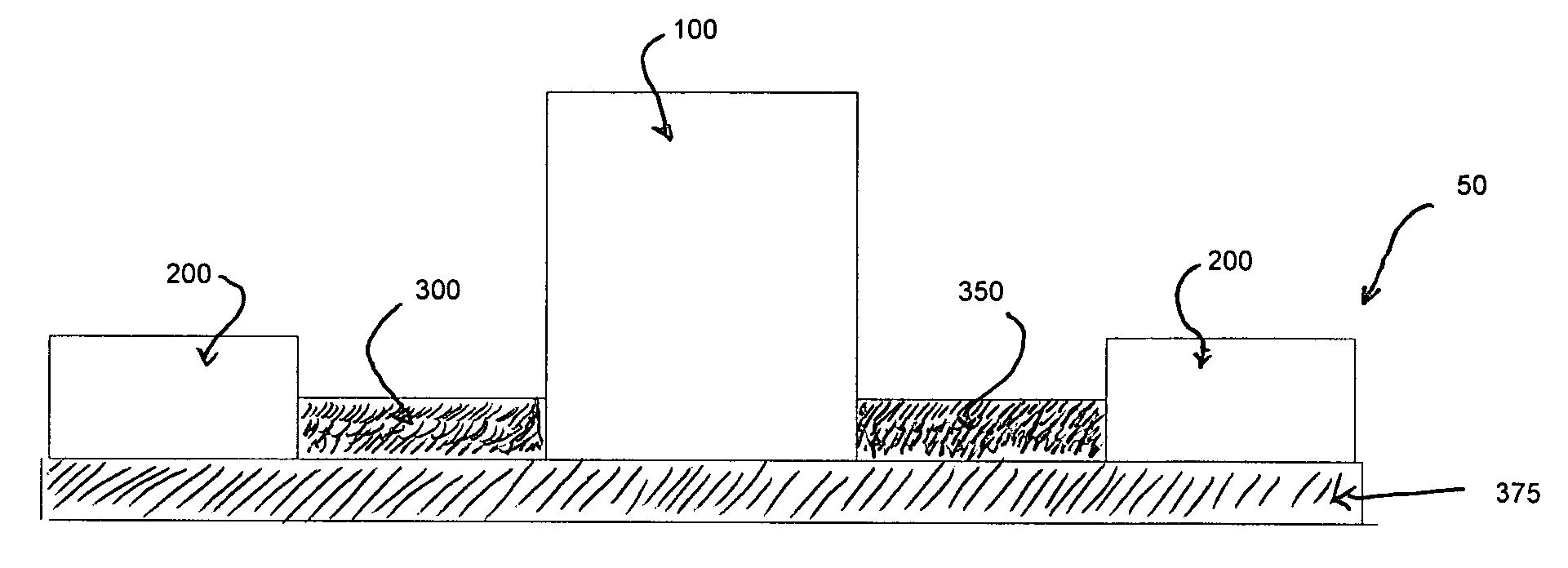Ratiometric test strip and method
a technology of ratiometric test strips and strips, applied in the direction of instruments, material analysis, analysis using chemical indicators, etc., can solve the problems of inconvenient and inaccurate conventional means, unable to reliably and practicably know whether the changes made in their diet have in fact reduced salt intake, and the salt intake is even more of an issue, so as to achieve accurate measurement of the collected volume and accurate concentration measurement
- Summary
- Abstract
- Description
- Claims
- Application Information
AI Technical Summary
Benefits of technology
Problems solved by technology
Method used
Image
Examples
example 1
[0088] To document that [0089] (1) measurement of urinary chloride concentration by the chloride titrator stick adequately approximates measurement by standard laboratory technique; [0090] (2) measurement of urinary chloride concentration by both laboratory and titrator stick adequately approximates measurement of urinary sodium concentration; [0091] (3) measurement of urinary creatinine concentration by dipstick adequately approximates measurement by standard laboratory technique; [0092] (4) measurement of chloride / creatinine ratio by titrator sticks approximates measurement of this ratio by standard laboratory technique; [0093] (5) measurement of chloride / creatinine ratio by titrator stick adequately approximates measurement of sodium / creatinine ratio by standard laboratory technique; [0094] (6) categorizing subjects as having low, medium or high urinary chloride concentration based on measurement by titrator stick is consistent with categorization based on measurement of urinary ...
example 2
[0114] To determine whether or not titrator stick chloride / creatinine ratios adequately approximate sodium excretion, urine samples are collected as above from a cohort of patients (30 subjects) from each of whom a 24-hour collection of urine is also obtained. Aliquots of each 24-hour urine sample, along with the “spot” urine samples (to be collected when each patient's 24-hour collection is delivered), are subjected to the same measurements and analyses as in Example 1. Correlation between dipstick chloride / creatinine ratio in the spot urine sample and 24-hour sodium excretion determined from the sodium concentration in an aliquot of the 24-hour urine collection is evaluated. The results allow an assessment of the power of the inventive approach compared to the “gold standard” for measuring dietary salt intake.
example 3
[0115] To document the clinical relevance of home monitoring of salt excretion by chloride / creatine ratios measured by titrator sticks, three 24-hour urine collections are taken from 30 subjects, at least a week apart, along with chloride / creatinine ratios acquired by dipstick from three corresponding spot urines (separate spot urines, rather than aliquots of the 24-hour collection, to be obtained at the time the 24-hour urine collection is brought in). The average dipstick chloride-creatinine ratio from the three spot urines predicts the average sodium content in the three 24-hour collections. The results complete the validation of the method and comprise the initial population of a database to permit the user to read total sodium excretion from chloride / creatinine ratios.
PUM
| Property | Measurement | Unit |
|---|---|---|
| colorimetric | aaaaa | aaaaa |
| blood pressure | aaaaa | aaaaa |
| weight | aaaaa | aaaaa |
Abstract
Description
Claims
Application Information
 Login to View More
Login to View More - R&D
- Intellectual Property
- Life Sciences
- Materials
- Tech Scout
- Unparalleled Data Quality
- Higher Quality Content
- 60% Fewer Hallucinations
Browse by: Latest US Patents, China's latest patents, Technical Efficacy Thesaurus, Application Domain, Technology Topic, Popular Technical Reports.
© 2025 PatSnap. All rights reserved.Legal|Privacy policy|Modern Slavery Act Transparency Statement|Sitemap|About US| Contact US: help@patsnap.com



